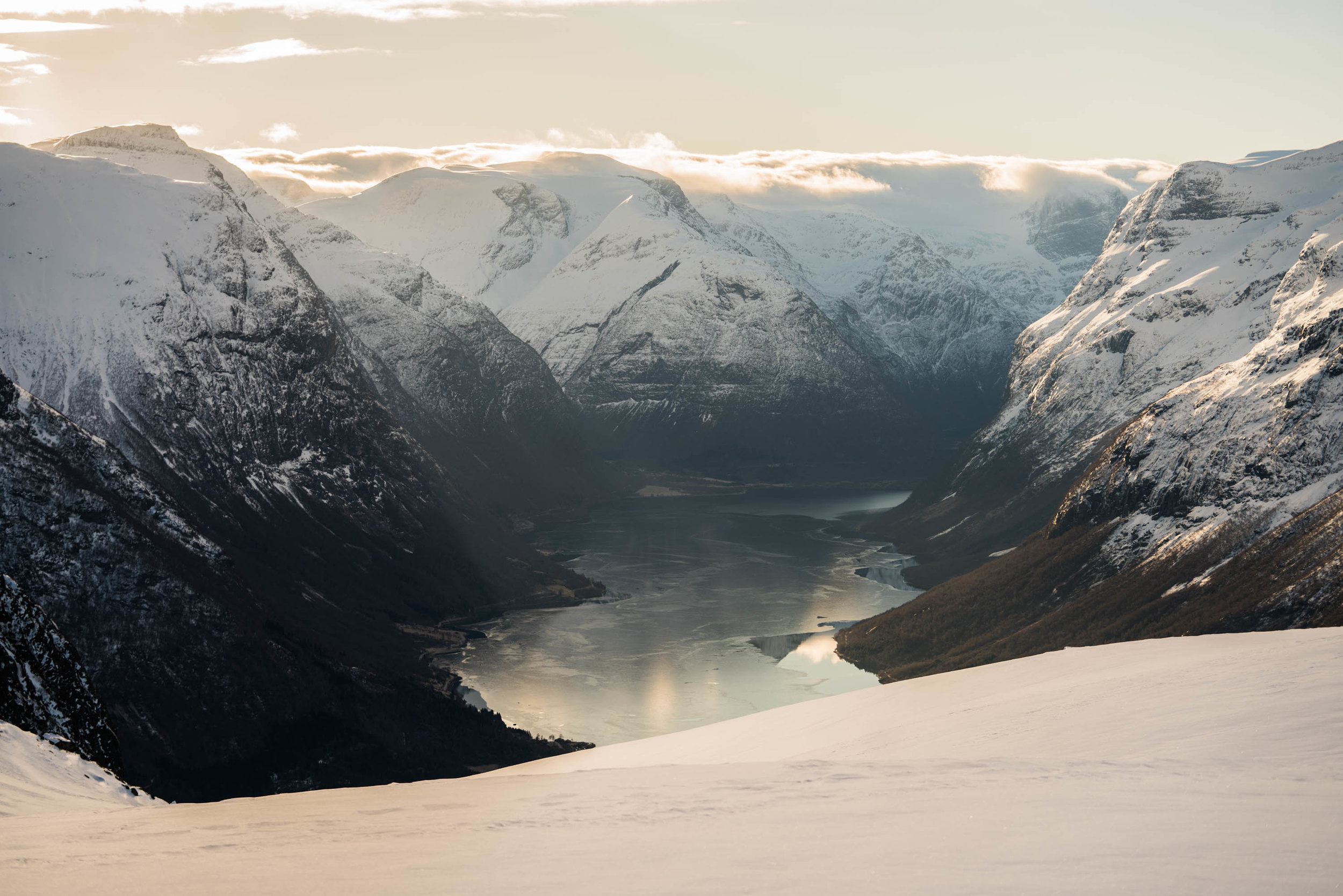Stay safe
Even people who have been enjoying Norway’s many mountains their entire lives have a healthy respect for them, and take care to be well prepared for every eventuality.
There is much to enjoy among the peaks, valleys and plateaus in the Norwegian mountains, but the beauty and serenity can quickly turn dangerous. Make sure your training, your knowledge of the area, and your equipment are all equally well suited for the trip.
For instance, before you set out, you should let people know where you are going, and when you expect to be there. Consider the weather reports – not only where you are going, but nearby as well – and keep in mind that conditions might deteriorate. Plan what to do if it gets dark or if the weather gets worse. Is it best to turn around or is there maybe a shorter way to a tourist cabin available?
Any time you’re in an unfamiliar area, you should bring a map, compass and a mobile phone. There are many places in the mountains without mobile coverage, but you might get lucky, so don’t leave it behind.
Follow trails that are well marked on the map and pay attention to signs and information boards along the way. If you lose your way, however, be on the lookout for cairns of rocks, which are usually found beside well-established paths. Spaced so that the next one along is within sight, they will guide you back to safety.
Remember to bring a torch, hat, gloves and an extra set of warm clothes on long-distance hikes. You should also bring a safety vest. It takes up little space and makes you easier to find if you get lost.
Emergency telephone numbers
110 – Fire
112 – Police
113 – Ambulance
120 – Emergency at sea
22 59 13 00 – Poisons Information Centre
1412 TDD (textphone for the deaf or hearing impaired)
The Norwegian Mountain Code
Stay safe by following these simple rules of thumb:
Plan your trip and inform others about the route you have selected.
Adapt the planned routes according to ability and conditions.
Pay attention to the weather and the avalanche warnings.
Be prepared for bad weather and frost, even on short trips.
Bring the necessary equipment so you can help yourself and others.
Choose safe routes. Recognize avalanche terrain and unsafe ice.
Use a map and a compass. Always know where you are.
Don’t be ashamed to turn around.
Conserve your energy and seek shelter if necessary.
IN THE HEIGHT OF SUMMER
Even in the summer, when the sun is out and warming nicely, you should pay attention to what clothes you wear and bring along. Make sure to shield yourself from the sun, and to be prepared if the weather should turn bad.
Dress for warmth
A windproof jacket is a must, as is woollen underwear, even on warm summer days. The mountain winds can get quite cold, and wool will still insulate you from the cold even when it’s wet – a property it does not share with cotton or nylon fabrics, for instance. Dress in layers, so you can easily regulate your temperature.
Drink frequently
If you get lost, conserve your strength, but remember to eat and drink frequently. Sun, wind, and strenuous physical activity may conspire to make you dehydrated, even if you do not feel thirsty. Most running water in the mountains of Norway is clean enough to drink, but avoid water running through pastures or runoff from glaciers, as this may contain harmful microorganisms.
Move downhill for help
If you have to be on the move to get help, walk downhill and try to follow creeks or rivers, as these will often lead to habitation.
On glaciers
Never venture onto a glacier alone. If you want to go hiking on a glacier, make sure you are accompanied by a certified guide.
IN THE DEAD OF WINTER
Many of the precautions you should take in summer are also valid in winter, but to an even greater extent: When it’s cold, it’s even more important to dress in layers of wool, not to get wet, and to wear windproof outer garments.
Stay warm, dry and hydrated
Hypothermia is what you want to avoid in the wintertime. Staying dry helps, as does having enough warm clothing. If you have an accident and have to spend the night, make sure you conserve enough energy to dig a cave in the snow, or set up a snow shelter against the wind.
Make sure to insulate yourself from the ground or the snow if you have to lie down – skis are great for this, if not exactly comfortable. A large backpack can be used as a small makeshift sleeping bag, and even a small one may keep your feet warm and dry.
If you get thirsty, don’t be afraid to eat snow as long as it looks clean and untouched. It will cool you down somewhat, but dehydration will most often be a bigger concern than hypothermia.
Loen Active rents out winter coveralls, winter boots and gloves.
Avalanche forecast
Protect your eyes
Even though it’s winter, you should take care to bring sunglasses, as the glare from the snow can be quite intense and cause snow-blindness in extreme cases. Loen Active has glasses for rent.
Signal for help
If you get lost, stay where you are and wait for help. Sticking your skis in the snow will make it easier for others to spot where you are.
Avoid avalanches
Avoid walking on and below overhangs and other avalanche-prone places, particularly if you spot traces of avalanches elsewhere around you. Always remember to check the local avalanche forecast in advance. You can’t outrun or outski an avalanche, so the best thing to do is avoiding them altogether. Use ar certified guide when ski touring.
(Information from visitnorway.com)




